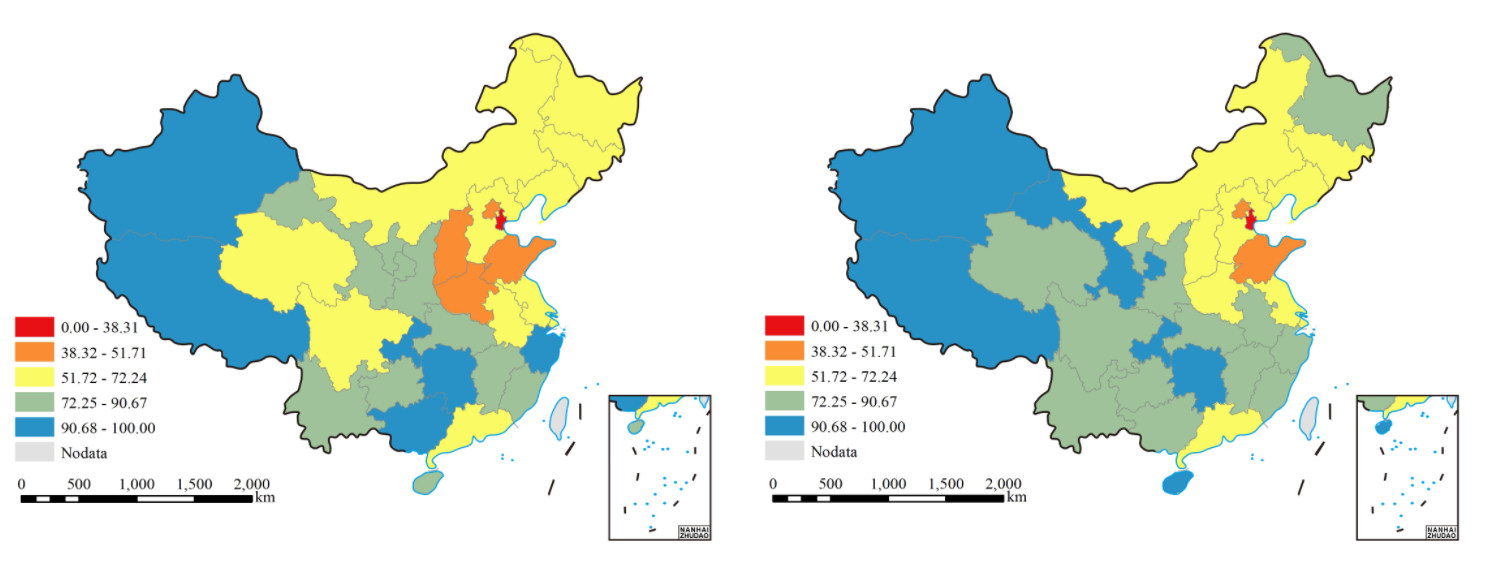SDG6: Clean Water and Sanitation
Analysis of surface water quality in China(2019)
Scale: National

Study area: China
Surface water quality is important for both human consumption and maintaining a healthy and functioning ecosystem. Pollution is one of the main causes of water quality degradation in surface water bodies throughout the world. The rapid economic development in China during the past 40 years has considerably increased the amount of pollutants released into water bodies. Over the past decade, the Chinese government has made a considerable effort to improve water quality. The Central Government of China has developed national standards for surface water environmental quality, and established a water quality monitoring network covering all major river basins across the country. The national standard identifies 24 main indicators, which also provide the basis for the SDG 6.3.2 indicator proposed by UN-Water. This case study focuses on the water quality of major rivers, lakes, and reservoirs, and uses data collected from national monitoring networks accessible from their website. Herein, a statistical spatial index of surface water quality was developed for China at provincial and municipal scales.
Target 6.3: By 2030, improve water quality by reducing pollution, eliminating dumping, and minimizing release of hazardous chemicals and materials, halving the proportion of untreated wastewatei, and substantially increasing recycling and safe reuse globally.
Indicator 6.3.2: Proportion of bodies of water with good ambient water quality.
Method
Surface water quality is classified into six categories by Environmental Quality Standards for Surface Water (GB3838- 2002). Classes III, II, and I represent progressively higher classes for surface water quality. The water quality data was collected online from websites administered by local environmental protection departments, where the observation data is regularly updated. An index was calculated by determining the proportion of water bodies for each water quality class within sub-national administrative boundaries.
Data used in the case
Observation data for surface water quality is issued online by environmental protection monitoring departments administered
Results and analysis
The above methodology was employed to calculate the proportion of each category of surface water for provincial and municipal administrative units in China during the 2016 and 2017 period. The proportions of water bodies with good ambient water quality in China was 67.8% in 2016. The proportion of Class I, II, III, IV, V, and inferior V water bodies was 2.4%, 37.5%, 27.9%, 16.8%, 6.9%, and 8.6%, respectively, with Class II and III in the majority. The number rose to 67.9% in 2017, and the proportion of inferior V water bodies decreased by 0.3% compared to 2016, suggesting that the water quality has improved. Spatially, the surface water quality in the western region of China was superior compared to the central and eastern regions. The Xinjiang Uygur Autonomous Region and Tibet Autonomous Region maintained the highest surface water quality during the 2016 and 2017 periods. After years of centralized treatment, the quality of surface water in China is observed to be gradually improving. However, there are still some provinces where the proportion of substandard water bodies is greater than 50%. There is still much work to be completed in water pollution control, such as differentiated governance and investigating pollution sources.

Figure 1. Proportion index for water quality at provincial scales in China in 2016 and 2017.
| Highlights |
| In 2016 and 2017, the proportion of bodies of surface water with good ambient water quality in China were 67.8% and 67.9%, respectively. The surface water quality in China's western region was superior compared to the central and eastern regions. |
Outlook
The monitoring result will be updated each year. A more comprehensive analysis is being planned by adding data from 2018 to 2020. This will allow for estimation of high surface water quality trends for ambient water quality.
A comparative analysis of water quality monitoring standards is also being designed for other countries and regions. This is necessary to explore the feasibility of using networks to acquire observation data for surface water quality analysis. This will allow for additional applications in countries and regions that maintain a water quality database.

